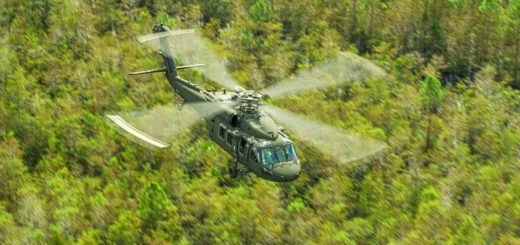US Army Expands Use of Mini-Drones to Enhance Squad Reconnaissance

{loadposition bannertop}
{loadposition sidebarpub}
The US Army is pushing the boundaries of modern warfare technology by implementing “pocket-sized” drones, starting with the New York National Guard soldiers at Fort Drum, New York, as reported by Task & Purpose on July 1, 2024. These mini-drones, particularly the Black Hornet 3, are being tested with the goal of eventually equipping each Army squad with such devices. The Black Hornet 3 drones, which can fly for about 25 minutes, are small and light enough for an individual soldier to carry along with their standard combat gear, including the drone, controller, and batteries. Follow Army Recognition on Google News at this link
The SBS is a portable system that can be controlled by a single Soldier, allowing the drone to complete dangerous work Soldiers usually perform on their own (Picture source: US DoD)
The operational advantage of the Black Hornet 3 is substantial. It provides live video transmission and HD still images that significantly enhance the situational awareness of the troops. This capability was first utilized by Special Forces in Afghanistan and has since been adopted by other elite units like the Army’s 82nd Airborne Division. The drone’s ability to perform reconnaissance without exposing troops to potential threats is a key strategy in reducing casualties and enhancing mission outcomes. According to Lieutenant Colonel Gary Barney, commander of the 2nd Squadron, 101st Cavalry Regiment of the 27th IBCT, these drones allow forces to engage the enemy with minimal risk and maximum intelligence.
Despite their small size, the drones are robust tools for reconnaissance, especially useful in challenging terrains or hostile environments where direct observation is risky or impossible. They have also proved beneficial for directing precision strikes, particularly in operations involving indirect fire systems like mortars. Specialist Jeffrey Anicet, a joint fire support specialist with the 1st Battalion, 258th Field Artillery Regiment, highlighted the precision that drones bring, enabling exact targeting, which is crucial for the effectiveness of guided munitions.
An unmanned aerial vehicle of the soldier-borne sensor (SBS) system flies during a system familiarization training event in Fort Drum, N.Y., June 27, 2024 (Picture source: US DoD)
However, the technology does have limitations, such as relatively short battery life and challenges operating in windy or low-light conditions. Despite these drawbacks, the potential for widespread use across the Army could redefine tactical operations at the squad level.
Training programs are underway to equip more units with this technology, ensuring that the knowledge and tactical advantages of drone operations are shared throughout the Army. The ultimate goal is to make these mini-drones a standard piece of equipment for all soldiers, enhancing their capabilities and operational readiness.

{loadposition bannertop}
{loadposition sidebarpub}
The US Army is pushing the boundaries of modern warfare technology by implementing “pocket-sized” drones, starting with the New York National Guard soldiers at Fort Drum, New York, as reported by Task & Purpose on July 1, 2024. These mini-drones, particularly the Black Hornet 3, are being tested with the goal of eventually equipping each Army squad with such devices. The Black Hornet 3 drones, which can fly for about 25 minutes, are small and light enough for an individual soldier to carry along with their standard combat gear, including the drone, controller, and batteries. Follow Army Recognition on Google News at this link
The SBS is a portable system that can be controlled by a single Soldier, allowing the drone to complete dangerous work Soldiers usually perform on their own (Picture source: US DoD)
The operational advantage of the Black Hornet 3 is substantial. It provides live video transmission and HD still images that significantly enhance the situational awareness of the troops.
This capability was first utilized by Special Forces in Afghanistan and has since been adopted by other elite units like the Army’s 82nd Airborne Division. The drone’s ability to perform reconnaissance without exposing troops to potential threats is a key strategy in reducing casualties and enhancing mission outcomes. According to Lieutenant Colonel Gary Barney, commander of the 2nd Squadron, 101st Cavalry Regiment of the 27th IBCT, these drones allow forces to engage the enemy with minimal risk and maximum intelligence.
Despite their small size, the drones are robust tools for reconnaissance, especially useful in challenging terrains or hostile environments where direct observation is risky or impossible. They have also proved beneficial for directing precision strikes, particularly in operations involving indirect fire systems like mortars. Specialist Jeffrey Anicet, a joint fire support specialist with the 1st Battalion, 258th Field Artillery Regiment, highlighted the precision that drones bring, enabling exact targeting, which is crucial for the effectiveness of guided munitions.

An unmanned aerial vehicle of the soldier-borne sensor (SBS) system flies during a system familiarization training event in Fort Drum, N.Y., June 27, 2024 (Picture source: US DoD)
However, the technology does have limitations, such as relatively short battery life and challenges operating in windy or low-light conditions. Despite these drawbacks, the potential for widespread use across the Army could redefine tactical operations at the squad level.
Training programs are underway to equip more units with this technology, ensuring that the knowledge and tactical advantages of drone operations are shared throughout the Army. The ultimate goal is to make these mini-drones a standard piece of equipment for all soldiers, enhancing their capabilities and operational readiness.






